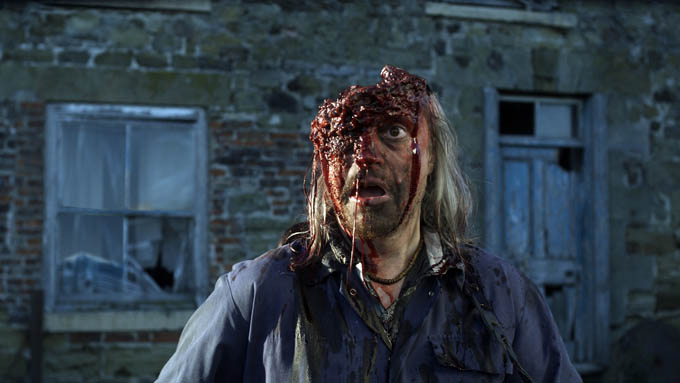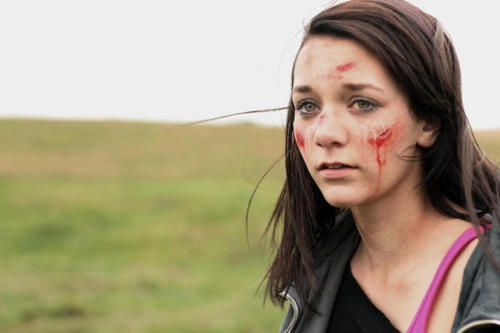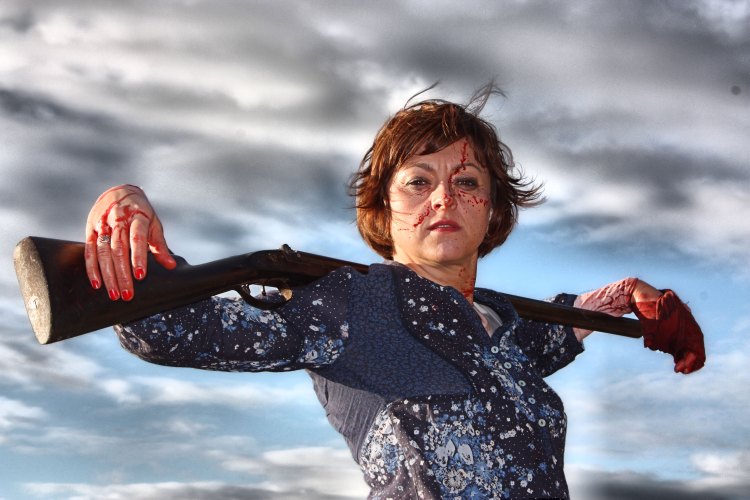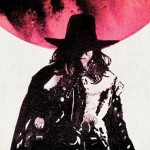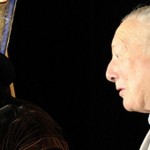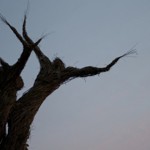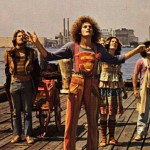BACKWOODS BESTIARY: A Q&A with Alex Chandon of “INBRED”
BACKWOODS BESTIARY
INBRED director Alex Chandon talks Bloodshed and Billy-Bob Teeth
Kier-La Janisse
————————
British director Alex Chandon may be best known for helming 2001’s Cradle of Fear, starring Dani Filth of UK metal band Cradle of Filth (for whom Chandon also helmed several music videos), but that controversial serial killer anthology came in after a long line of DIY gut-munchers – many of them featuring musicians as actors – that put him somewhere between Olaf Ittenbach, Jim Van Bebber (who also narrates Chandon’s 1992 Drillbit) and Australia’s Mark Savage. Chandon’s latest film is his most ambitious endeavour yet, boasting not only his most professional budget, but also some unforgettable production design and gleefully excessive gore FX. Chandon spoke to Spectacular Optical about this fun, blood-soaked excursion to the canadian pharmacy viagra generic British backwaters.
————————–
Tell me about the idea to have the characters be juvenile delinquents on a character-building weekend – where did the idea for this come from? As far as you know, would this be allowed to happen in the UK?
I had the premise for Inbred many years ago, and originally it was a treatment written more as a standard ‘teens on a weekend away meet crazy people’ scenario, but when it came to writing the script I realised how cliched that was and also how limiting that set up was in order to explore some good character arcs in the teenage characters. I enjoy some reality TV, it is the voyeur in me, and there are numerous shows in the UK about delinquent teens, Teen Boot Camp and the like, and I think watching these gave high quality cialis me the seeds of inspiration that the kids should be from troubled backgrounds. And I am a massive fan of Mike Leigh’s film Nuts in May, which follows a mismatched couple on their weekend camping where lots goes wrong, and the humour is dark and painful and wonderful. So I blended the ideas… the couple became the two care-workers on a weekend trip with a group of delinquent teens. From that point on it became a joy to write purchase cialis on line as all the characters could play off each other wonderfully. As for whether this set up happens in the UK… yes it does, sort of. They are often referred to as Community Service schemes, where a group canada cialis no prescription of teens and two care workers go off and do some good for a community. I’ve embellished it a bit with the weekend away… that might not happen… but team building trips to the country with troubled teens happens too. Teens in trouble in the UK are helped levitra canadian pharmacy as much as possible before flinging them in jail.
I’m from Canada, so I don’t know much about the reputations of different townships in England (although I’ve heard the expression “Normal for Norfolk”[i]) – is the location the film is set in associated with the kinds of rural characters in the film?
I’ve not heard that expression about ‘Norfolk’. Shows what I know! Depending on where you are in England you’ll always hear people’s stereotypical generalisations about other places in England. So yes, the location the film is set in, Yorkshire, which is the North East of England, is associated, in a stereotypical way, with country bumpkins, farmers with flat-caps, ferrets down trousers and people eating pork-scratchings and drinking ale. The script is co-written by a Yorkshire-man, Paul Shrimpton… who lives in the Yorkshire town we filmed in, Thirsk, and he re-assured us that we wouldn’t get the shit kicked out of us for making a film called Inbred and setting it in Yorkshire. Luckily Yorkshire people have a great sense of humour and understood that we weren’t making a documentary!
It’s interesting because the primitive backwoods horror subgenre is more associated with America and Australia – this is one of few examples of the genre being transposed to England, as far as I know (Eden Lake veers into this territory but doesn’t quite count). Were there any backwoods films you found especially inspiring when creating Inbred?
That was the original reason I wrote the treatment way back in 2001, as I felt it was sub-genre that hadn’t been done in the UK in a horror film. You need to check out the amazing BBC dark-comedy series The League of Gentlemen, which brilliantly portrays a back-woods village in England inhabited with very strange characters. That was definitely an inspiration… although my true inspiration was from the original 70’s backwoods movies… The Wicker Man, The Texas Chainsaw Massacre, The Hills Have Eyes, Deliverance and Straw Dogs. It has been pointed out that Inbred is familiar in theme to 2000 Maniacs, which is a film I’ve still not seen… though I know all about it. I wasn’t going for that feel, but now I can see the similarities in story idea.
The rural characters enjoy a unique type of grand guignol-esque theatre. This is actually where I see more of a connection to The Wicker Man and British folk-horror (or even something like Calvaire), with the ritual and ceremony, dressing up the victims etc. How would you describe the characters’ attachment to this type of theatrical routine and its place in their makeshift society?
I adore Calvaire and The Wicker Man and both resonated in my mind when writing the Inbred script so I’m glad you made the connection. We created a back story for our Inbreds and all the characters in the film which was important for the actors to understand as to their actions and motivations… and then we deliberately took out any un-necessary exposition from the dialogue. So what comes through on screen is everyone getting into the whole ethos we created. The community in the film cut themselves off from the outside world in the late 1970’s, and so they still live in that world. Our brilliant production designer Melanie Light came up with the idea of a muted colour pallette in everything we see on screen to re-enforce the idea of a place stuck in the past. So the only bright, primary colours in the film are those worn by the ‘outsiders’… the teens and their care-workers. The Inbreds perform shows because that is how people used to enjoy entertainment back in the day before video and Internet. The dressing up is referencing scarecrows and the cult 70’s British childrens TV show Worzel Gummidge…. in INBRED we have a few references to Worzel Gummidge. It was a TV show that freaked me out when I was 8.
The film opens with this kind of violent spectatorship too – Chris Waller’s character Dwight is watching a gore video on his phone, making a connection between him and the rural assailants.
The opening was important to tell our audience what Inbred is all about in a nutshell. I knew I wanted to develop my characters for the first act and also knew that the people I’m making the film for want some cool gore set pieces, and so by putting a scene that throws people off and delivers some great gore, and serves as a neat link into the opening sequence ticked all my boxes. We wanted to shoot this scene outside, and we were at a beautiful location, a field of red poppies, but it rained so we were forced to shoot it inside. But keeping it rural was integral to lure the audience in, and make them wonder what the F**k is going on!! I love the film Old Boy and always wanted to do a beautiful dissolve, like that film does often, from one scene to another… and that’s how the dissolve between the sequences came about.
Tell me about creating the gore setpieces – any anecdotes about FX that were especially challenging? What’s the ratio of digital vs practical FX in the film?
What FX shot that wasn’t challenging would be easier to answer! We created so many challenges for ourselves. It’s so worth it now, looking at the results… but pretty much every FX shot or VFX shot was a challenge for one reason or another. I love practical FX and have employed them in every film I’ve made, and I also love the art of digital compositing, which is compositing together real elements filmed at different times. Being skilled in digital compositing and having friends into practical FX allowed me to devise creative set pieces that utilised the best of both worlds and would, we hope, create a lasting impact on everyone who sees the film. So far it’s working. Every effect you see in the film is practical of some sort, and 80% of them have had some sort of digital compositing. But like I say, the digital work is based on real elements, filmed in the same location, under the same light source, whenever possible. So that is why I it all looks very real. Numerous scenes caused multiple head-aches, due mostly to the limited time we had to shoot… one shot in particular had one FX company so stumped they gave up on it… so I had to solve it! A lot of the challenge was the finessing, making everything as perfect as possible. If people notice it’s a digital effect of any sort we’ve failed. There are about 160 vfx shots in the film (I did over 100 of them!), but only a few are obvious!
How does it work with the BBFC when making a film with this level of gore? For Cradle of Fear didn’t you avoid a certificate by selling it through another country or something to that effect?
The BBFC have moved with the times and are actually very liberal with their certification in my opinion. They allow extreme violence and even hardcore sex in 18 certificate movies. I think Cradle of Fear would be closer to a 15 nowadays! What freaks them out (and I agree) is extremely taboo breaking violence for violence’s sake… like A Serbian Film. I am not into those kinds of films as they alienate so many people. I want to make entertaining films. I am a massive fan of Paul Verhoeven and Monty Python and all their extremes and excesses and it’s possible to be gross-out but still entertain and that is what we tried to do with Inbred.
Tonally the film shifts whether it’s focused on the interloping protagonists or the predatory locals – the story of the JDs in the country with social workers has room for a lot of drama on its own, but the hick characters – with obvious “Billy Bob” teeth – are very exaggerated and seem aimed at comedy a lot of the time. Tell me about how you worked out a balance between these two.
The contrast in tone was key… and what I feel makes the film work so well and that is testament to our wonderful actors… teens, carers and Inbreds. I feel that comedy horror films only work when you get the balance right between real threat/horror and humour. American Werewolf in London, Re-Animator, Evil Dead 2, Bad Taste and Shaun of the Dead are all in my top 10 horror movies ever and their style was a massive inspiration in how to play Inbred. The carers and the teens had to take everything incredibly seriously… and the Inbreds are just having a laugh and taking the piss. And that way nothing becomes too bleak or social commentary style. It’s entertainment. It allows us to laugh at what are quite heinous situations. And it allows us to be scared by relating to the situation the teens and care workers are in. I think the juxtaposition between the two creates the extreme black humour in the situation. I’m also a fan of the Inbreds!
There are some particularly good performances from the protagonists’ camp – Jo Hartley is fantastic, and she actually has a credit for ‘additional casting’ – what did that entail?
For me personally the wonderful ensemble acting in Inbred is what I’m most happy with achieving.. it blows my mind how amazing all the main actors embellished the characters we wrote. We knew we wanted good actors but it was Jo Hartley, who was integral to us making sure that every single actor was amazing. Jo loved the script but she felt it was a risk at that point in her career if it was a cheesy, fake horror film. I persuaded her of our intentions to make it real, in a black comedy style and she agreed to the role if the other actors were great and then suggested some amazing actors for some of the other parts. Seamus O’Neill (Jim) agreed to do the film because Jo was in it and Jo also brought in Neil Leiper (Gris), Nadine Rose Mulkerrin (Sam) and George Newton (Wilf). Jo was a complete star all the way through the film in all stages of production… she even typed up a great 14 page constructive critique of our first rough cut, and I took lots of her points on board for the final edit… now that is dedication! I’d love to work with Jo again one day.
This is the ferret’s first film credit. Was he well-behaved? I see he has his own bio on imdb.
Ha ha! Turkish, the ferret, was amazing. All his shots were done in three takes… a real pro. He was brilliantly behaved… well coached by his mentor Mark Rathbone who plays Ron in the film. In fact all the animals we used were incredibly well behaved and performed on cue… as did the children. So the myth is wrong… animals and kids are pros… it’s adults and special fx that are problems to shoot!
I just wanted to add that we are so pleased to be part of Fantasia!!
———————
INBRED has its Quebec premiere on July 27 at 11:55pm in the Hall Theatre, hosted by Producer Yazid Benfeghoul. For more information see the film event page HERE.
[i] For more on the history of this expression, see http://www.literarynorfolk.co.uk/normal_for_norfolk.htm

 July 27, 2012
July 27, 2012  No Comments
No Comments
